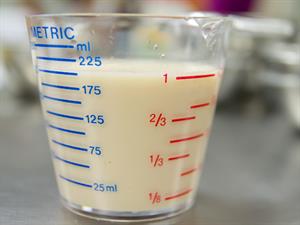PDF chapter test TRY NOW
Have you ever noticed your mother getting vegetables and milk from the shop? Do you think that the shopkeeper uses the same unit for measuring both the items?
If someone inquires about your height, how will you measure and inform them?
How long will it take for you to reach your school from your house?
All these questions refer to the measurement of particular quantities called physical quantities.
All these questions refer to the measurement of particular quantities called physical quantities.
A physical quantity is a quantity that measures the properties of material or substances. Some of the physical quantities are mass, weight, distance, temperature and volume.

Magnitude
The magnitude of physical quantities is measured using the value and its unit. For instance, if the length of the table is \(1\ metre\), then '\(1\)' is the value and '\(metre\)' is the unit selected to express the length, which is a physical quantity.
Now we understand physical quantities, but have you ever wondered why we use different physical quantities?
Different physical quantities are used to differentiate the measurements of objects based on their properties.
For instance, the volume of milk is measured in litres and the height of a building in metres. Volume is the space contained in an object, whereas; height is the measurement of the distance. Hence, both cannot be expressed using the same physical quantities.


Classification of physical quantities
The physical quantities are of two types, namely,
- Fundamental quantities
- Derived quantities
Fundamental quantities
Physical quantities that cannot be expressed in terms of any other quantities are known as fundamental quantities. It is a basic requirement in physical measurements, which derive all the other quantities.
The unit that corresponds to the fundamental quantities is known as fundamental units. These are the base units which does not depend on any other unit.
The following seven basic fundamental physical quantities are measured in SI units (System of International Units).
S.No | Fundamental quantities | Unit | Symbol |
1. | Length | Metre | m |
2. | Mass | Kilogram | kg |
3. | Time | Second | s |
4. | Temperature | Kelvin | K |
5. | Electric current | Ampere | A |
6. | Amount of substance | Mole | mol |
7. | Luminous intensity | Candela | cd |
Derived quantities
The physical quantities that are obtained by mathematically combining, multiplying, or dividing the fundamental quantities are known as derived quantities. The corresponding units are known as derived units.
Some of the derived units are listed below.
S.No | Derived quantities | Formula | Unit | Symbol |
1. | Area | square metre | \(m^2\) | |
2. | Volume | cubic metre | \(m^3\) | |
3. | Speed | metre per second | \(m/s\) (or) \(ms^{-1}\) | |
4. | Electric charge | Coulomb | \(As\) (or) \(C\) | |
5. | Density | kilogram per cubic metre | \(kg/m^3\) (or) \(kgm^{-3}\) |
Reference:
https://snappygoat.com/b/129711b912d310647ce5056d95917a510a0f4ef8
